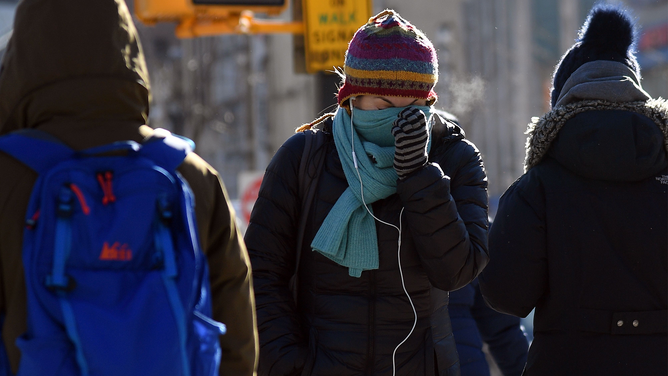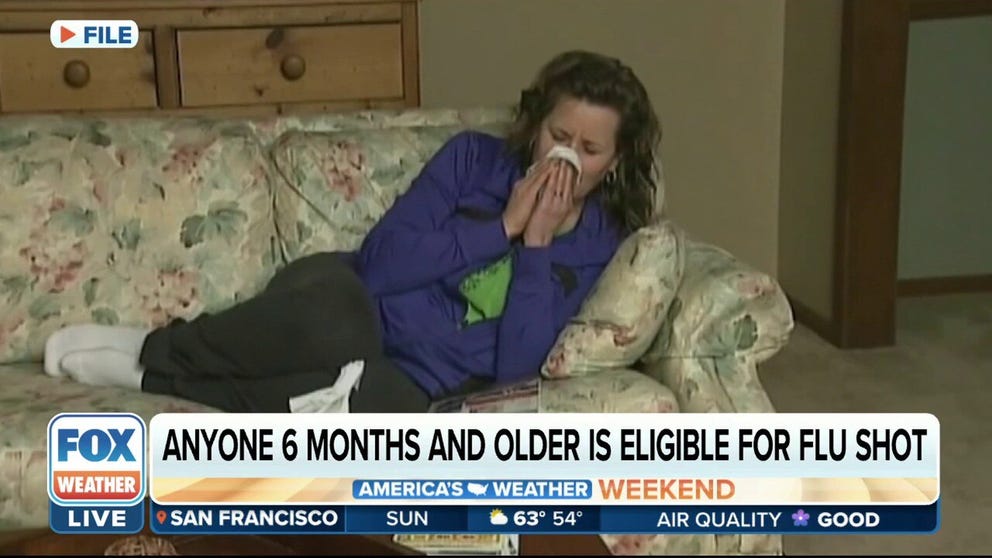Why do cold and flu seasons coincide with winter? Researchers say blame the chilly air
A recent study found that a drop in temperatures makes our nasal passages – one of our first lines of defense against germs – more vulnerable to bacterial and viral infections.
Tis the season for sneezin: Flu season begins
Flu season is here and doctors are expecting a rough one. Dr. Janette Nesheiwat joined FOX Weather on Sunday afternoon to explain ways to stay healthy.
A study published in a leading medical journal on allergies and immune systems found that a drop in temperatures makes us more vulnerable to viruses that cause the cold and flu. This is because cold temperatures compromise one of our first lines of defense against the viruses – our noses.
The study built on findings from 2018 research that helped explain a body's defense mechanisms. Researchers found that cells in our nasal lining produce tiny sacs called extracellular vesicles, which attack bacteria that enter through the nasal passages.
DEBUNKING MOM MYTHS: WILL I REALLY GET THE FLU IF I DON'T WEAR A HAT?
"[The extracellular vesicles] create this swarm effect, almost like you're kicking a hornet's nest, and the hornets start attacking the invader," said Mansoor Amiji, professor of pharmaceutical sciences at Northeastern University in Boston and co-author on both the 2018 and 2022 studies.
"That phenomenon intrigued us," he added.
Cold air leading to colds

A man sneezes into tissue.
(Universal Images Group / Getty Images)
According to Amiji, these findings compelled him and his colleagues to find out whether this defense mechanism extended to viral infections, which cause the common cold and flu. They also sought to learn whether changes in air temperature could make an impact on these defenses.
The study published on Tuesday in the Journal of Allergy and Clinical Immunology found that extracellular vesicles do help defend against viruses, in addition to bacteria.
Researchers also learned that temperature does play a significant role, in that cold air in the nasal passage can lead to a drop in the effectiveness of bacteria- and virus-fighting extracellular vesicles.
FLU SEASON EXPECTED TO BE MORE SEVERE THIS YEAR COMPARED TO LAST YEAR
Amiji, along with his colleagues and first author on the study Di Huang, discovered that a 5-degree drop in air temperature led to a 50% decrease in the number of vesicles produced in the nasal passages.
Also, the receptors or "sticky arms" on the outer surface of vesicles, which catch viruses before they can land on and infect a nasal cell, decreased by about 25-40%. Additionally, the number of antiviral molecules in each vesicle, which help inhibit viral infection, decreased by 20%.
Lower temperature, lower immunity

People walk through the freezing cold in the Brooklyn borough of New York on January 31, 2019.
(ANGELA WEISS/AFP / Getty Images)
"In all of these three different methods that our bodies are arming us to defend against these infections, we are seeing a decrease in the protective effect by, in each of these categories, between 20 up to 50%," Amiji said.
This decrease in the body’s immune response in cold temperatures can help explain why cold and flu season often coincide with the winter season. As temperatures drop, fewer and less-equipped vesicles are in place to protect our bodies from infection.
HOW TO WATCH FOX WEATHER ON TV
Amiji cautioned, however, that cold temperatures aren’t the only cause of infections as greater exposure to bacterial or viral agents may also increase a person’s chances of becoming sick. He also noted that dry air or low humidity may also be a contributing factor.
